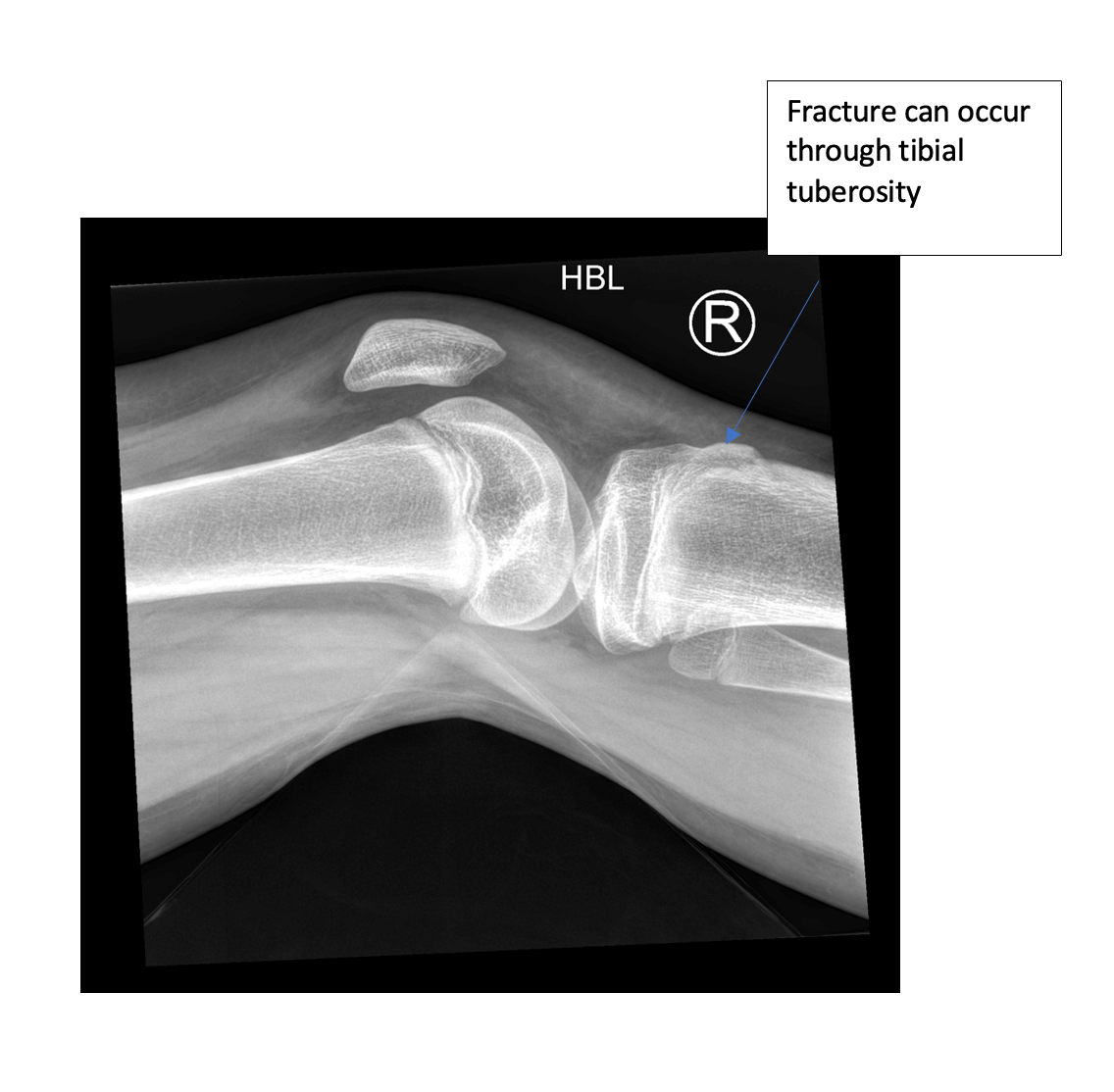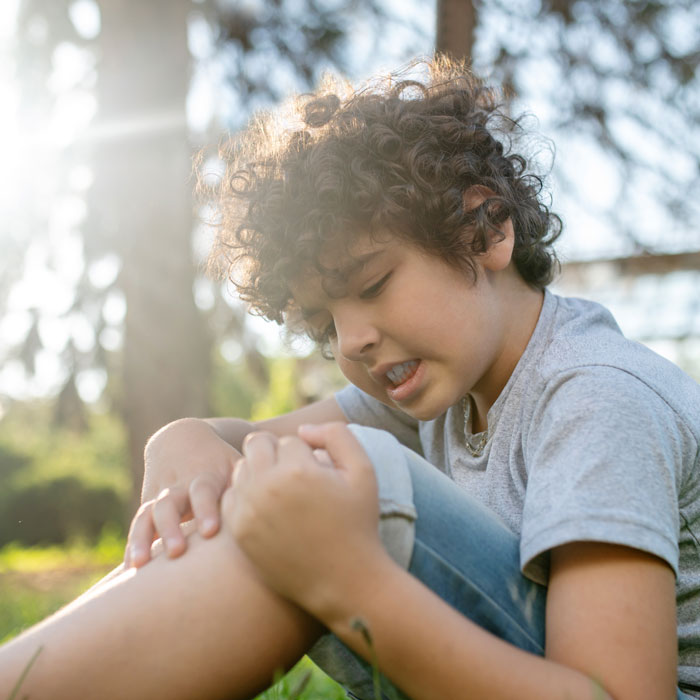
What is a tibial tuberosity fracture?
A tibial tuberosity fracture occurs when the tubercle (bump on the front of the shinbone) fractures. It is thought to occur in adolescents as the bone is still growing and the stronger tendon which attaches here can pull the bone causing a fracture through it
How common are tibial tuberosity fractures?
What are the symptoms?
Typically after running, jumping or playing sports a sharp pain is felt at the front of the knee, sometimes with a visible bump and a description of feeling a ‘pop’.
How are they diagnosed?
An X-ray is used to diagnose the fracture, sometimes a CT scan or MRI may be needed if the fracture pattern looks more complex or if other injuries are suspected.
What is the treatment?
If the fracture has not moved and the position is acceptable on X-ray then the knee would be placed into a splint until the fracture has healed. If the fracture has moved and there is a gap then surgery is needed to reduce the fracture and hold the position with screws and sometimes a plate.


What are the complications?
Complications include the bones not healing, affects on the growth of the bone and limb length discrepancy in younger patients. Bleeding from the injury can in some cases cause a compartment syndrome which is a surgical emergency requiring decompression of the muscles to relieve the pressure.
More information can be found here:
https://eor.bioscientifica.com/view/journals/eor/5/5/2058-5241.5.190026.xml
https://www.ncbi.nlm.nih.gov/books/NBK544275/
If you or your child experience knee pain or a “pop” sensation after a sports-related incident, don’t ignore it. Seek immediate medical attention and request an X-ray to rule out a tibial tuberosity fracture. Remember, early intervention can make a significant difference in getting back to an active and healthy lifestyle.
